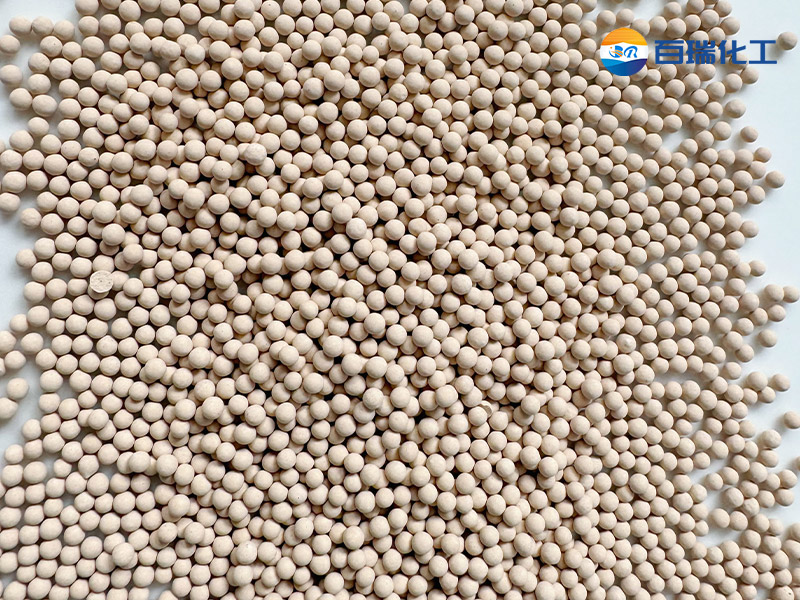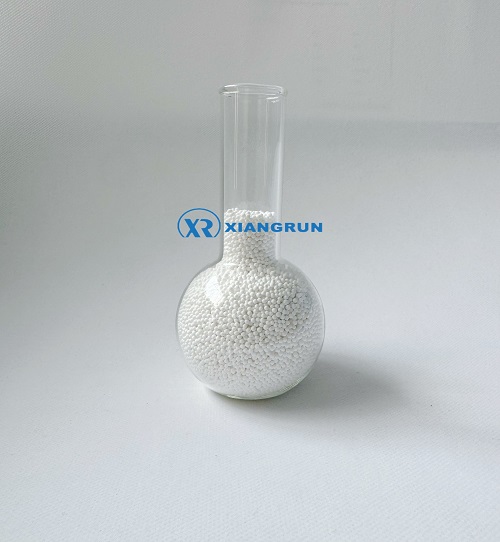Activated alumina, with its excellent mechanical strength, reliable drying depth, and good anti-interference ability, provides the best balance of performance and cost in most industrial applications. Ensuring good pre-filtration and regular maintenance is key to fully realizing its performance and extending its service life.
How does activated alumina work in a dryer?
In the most common pressure swing adsorption (PSA) compressed air dryer, there are typically two adsorption towers filled with activated alumina. The process follows a delicate cycle:
1. Adsorption Process:
Moist compressed air enters Tower A and flows through the activated alumina bed.
Water vapor molecules in the air are firmly adsorbed by the activated alumina's powerful surface and polar forces within its countless micropores.
The air exiting Tower A is exceptionally dry, with a pressure dew point consistently reaching -40°C or even lower.
2. Regeneration Process:
While Tower A is operating, Tower B is in the regeneration phase.
At this point, a portion of the dried air from Tower A (approximately 15%) is drawn out as "regeneration air" and blown back into Tower B.
This dry air, under low pressure, desorbs water molecules from the pores of the activated alumina in Tower B and carries them away, exhausting them into the atmosphere.
This restores the drying capacity of the activated alumina in Tower B, ready for the next cycle.
3. Automatic Switching
Using precisely controlled valves, the two adsorption towers automatically switch roles every few to ten minutes (Tower A adsorbs → Tower B regenerates, and vice versa), ensuring the dryer continuously delivers deeply dried compressed air.
Why it? 7 irreplaceable advantages of activated alumina
Among many desiccants (such as silica gel and molecular sieves), why has activated alumina become the mainstay of industrial drying?
Excellent mechanical strength: It can withstand the continuous impact of compressed air and the pressure of the adsorption tower, is not easily pulverized, and has a long lifespan.
Deep drying capability: It can easily reduce the pressure dew point to -40°C or even lower, meeting the most stringent industrial requirements.
Resistant to liquid water shock: Even if a small amount of liquid water intrudes due to improper pre-treatment, its structure is not easily broken, while silica gel will "explode" and pulverize.
Synergistic purification effect: It not only absorbs water, but also effectively adsorbs trace oils and acid gases in compressed air, providing cleaner air.
High cost-effectiveness: It strikes a perfect balance between drying depth, strength, and service life, resulting in a low total cost of ownership.
Low regeneration energy consumption: Compared with molecular sieves, it generally requires less energy and regeneration gas for desorption, resulting in more energy-efficient results. High stability: chemical properties are stable, insoluble in water, and will not react with compressed air.
Maintenance and Replacement: When should your dryer be replaced?
Activated alumina is not permanent; its performance degrades over time.
Replacement signals:
The outlet dew point continues to rise and fails to meet specified requirements.
A large amount of liquid water is ejected from the muffler during regeneration exhaust.
The equipment's operating cycle is abnormal, with a significant increase in differential pressure.
Replacement interval: Typically 3-5 years, but this is highly dependent on the effectiveness of the pre-filter. Oil and dust are the primary killers of activated alumina, so ensuring your filtration system is operating efficiently is key to extending its lifespan.
Leveraging our deep industry expertise, Zibo Xiangrun ensures that each alumina product possesses exceptional mechanical strength, ultra-high static adsorption capacity, and excellent resistance to liquid water impact, ensuring stable deep drying results, significantly extending its service life, and reducing your overall operating costs.













